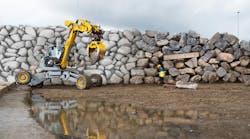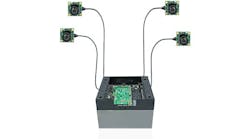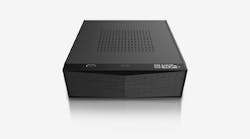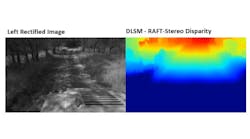This year,Vision Systems Design celebrates its 20th anniversary. Throughout the year—as part of our Vision 20/20series— we are going to encourage people to think about where the imaging and machine vision industry could be headed in the next20 years, while also taking a look back at the past 20 years.
Andy’s January 2005 editorial asked “Where are the Chinese?” referring to the absence of theChinese on the global scale, and whether or not they would enter the machine vision market, and how.
He wrote, "Last year, you may have attended one or more of the numerous trade shows now devoted to machine vision and image processing. If you did, one thing was clear: of all the exhibitors that showed products, fewer than 1% of the companies were from China. With the barrier to entry into the vision market so low, it seems strange that such a small percentage of Chinese manufacturers offer OEM lighting, cameras, frame grabbers, software, or automation components."
He concluded the editorial by noting that many Chinese companies (at the time) are set up to produce end-user products in volume.
"No engineering expertise is required," he wrote. "Realizing this, it is likely that they will first enter the machine-vision market on a component level. In this way, the Chinese companies can maintain volume production while allowing Western and Japanese suppliers to reduce subsystem costs."
The cover story for this particular issue focused on an industrial safety system. Specifically, Andy wrote about an aerosol monitoring system that used vision to measure particles. Whenever hazardous substances such as dusts, fumes, mists, vapors, or gases exist or are produced in manufacturing or construction, their concentrations must not exceed specific limits set by the US Occupational Safety and Health Administration, Andy wrote. As such, the Haz-Dust III portable monitor was designed for industrial hygiene and environmental air investigations. The system used the principle of near-forward light scattering of infrared (IR) radiation.
Elsewhere in the 2005 issue, Andy wrote about a data acquisition system that controls a packaging machine, a line scan camera-based system that inspected flat-panel displays, a smart camera-based system that inspected labels at high speed, and vision-guided UAVs for security and defense, among others.
In this issue’s new products section, Andy covered—among a number of other new products—a high-speed camera, a smart camera, a servo controller, a CMOS image sensor, and imaging software.
Take a look at the January 2005 issue.
We will continue to highlight archived issues in the future, so keep an eye out for more “blast from the past” articles from Vision Systems Design.
Share your vision-related news by contactingJames Carroll, Senior Web Editor, Vision Systems Design
To receive news like this in your inbox,click here.
Join ourLinkedIn group | Like us on Facebook | Follow us on Twitter






